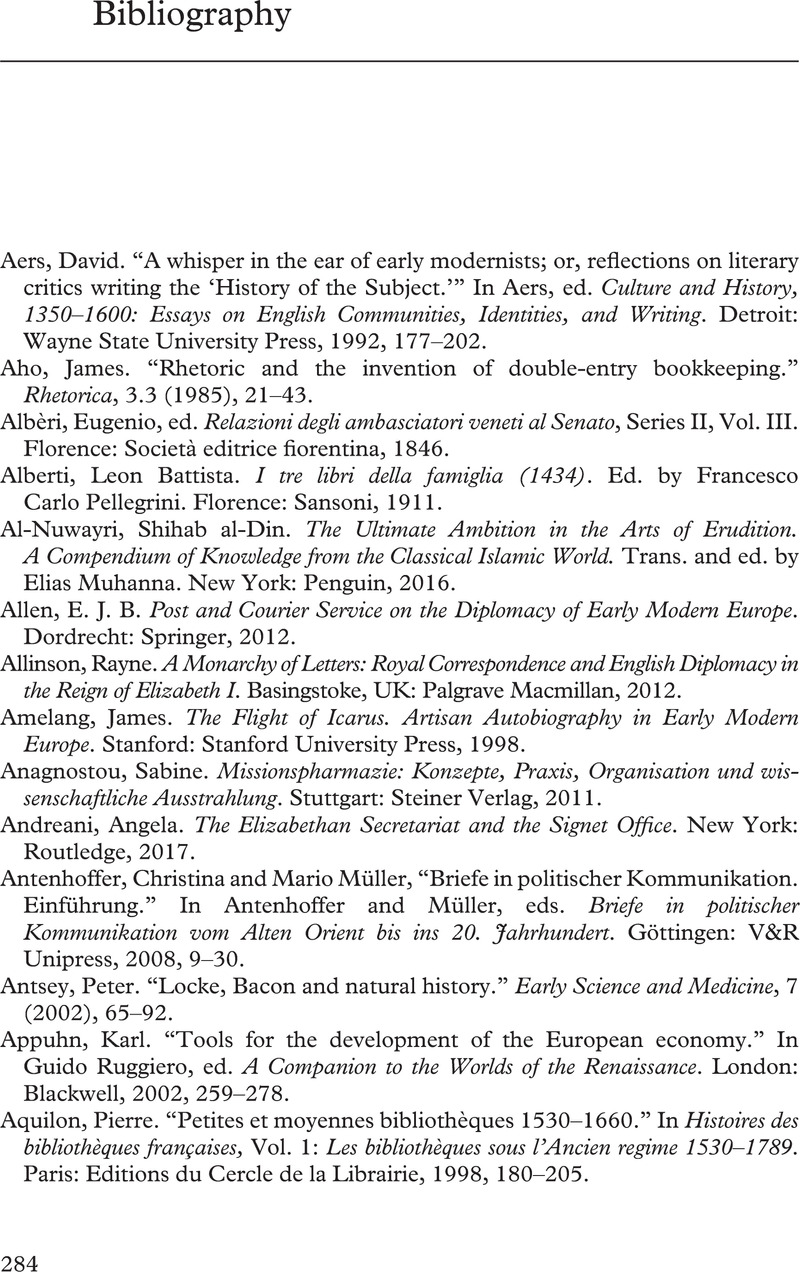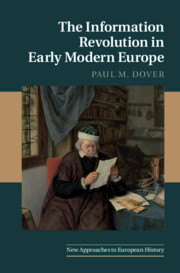Book contents
- The Information Revolution in Early Modern Europe
- New Approaches to European History
- The Information Revolution in Early Modern Europe
- Copyright page
- Dedication
- Contents
- Figures
- Acknowledgments
- 1 Introduction
- 2 European Paper
- 3 “Ink-Stained Fingers”
- 4 The Paper of Politics and the Politics of Paper
- 5 Revolutionary Print
- 6 The Book of Nature and the Books of Man
- 7 Writing Others and the Self
- 8 Conclusion
- Bibliography
- Index
- References
Bibliography
Published online by Cambridge University Press: 24 September 2021
- The Information Revolution in Early Modern Europe
- New Approaches to European History
- The Information Revolution in Early Modern Europe
- Copyright page
- Dedication
- Contents
- Figures
- Acknowledgments
- 1 Introduction
- 2 European Paper
- 3 “Ink-Stained Fingers”
- 4 The Paper of Politics and the Politics of Paper
- 5 Revolutionary Print
- 6 The Book of Nature and the Books of Man
- 7 Writing Others and the Self
- 8 Conclusion
- Bibliography
- Index
- References
Summary

- Type
- Chapter
- Information
- The Information Revolution in Early Modern Europe , pp. 284 - 330Publisher: Cambridge University PressPrint publication year: 2021

